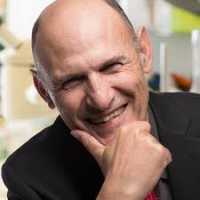16 Dec Cellular Reprogramming May Slow or Reverse Aging
MedicalResearch.com Interview with:
Juan Carlos Izpisua Belmonte PhD
Professor, Roger Guillemin Chair
Salk Institute of Biological Science’s Gene Expression Laboratory
MedicalResearch.com: What is the background for this study?
Response: Previous studies from different laboratories including ours demonstrated that cellular reprogramming to pluripotency has the capacity to rejuvenate old cells in culture (in a dish) to a younger state. In 2011, we published a study in Nature demonstrating that cellular reprogramming could rejuvenate cells from patients suffering from Hutchinson–Gilford progeria syndrome (HGPS), a premature aging syndrome. The current study started after this publication back in 2012 and the two major questions that we had were:
-Could partial, but not complete, cellular reprogramming rejuvenate cells?
-Could partial reprogramming rejuvenated cells in a living organism improving its health and lifespan?
MedicalResearch.com: What are the main findings?
– Partial reprogramming, not complete reprogramming to pluripotency, can induce amelioration of age-associated phenotypes in vitro.
– Partial reprogramming in a living animal can ameliorate age-associated phenotypes, improve tissues and organs, enhance regeneration and extend lifespan.
– Epigenetic dysregulation is a major driver of aging since restoration of epigenetic marks by in vivo reprogramming slows down aging and can extend the lifespan.
MedicalResearch.com: What should readers take away from your report?
Response: Aging is the major risk factor for most human disease and a major socioeconomical problem as modern societies get older. Therefore, development of novel therapies that can slow down or reverse the aging process will have a major impact for many human diseases. Our goal is not only to extend lifespan, but most importantly to extend health span, the number of years that we can stay healthy.
The most important finding is that our study shows that aging is dynamic and plastic. We can now slow down or even reverse aging. Our hypothesis is that epigenetic dysregulation (changes in epigenetic marks observed during aging) is one of the main driver/cause of the aging process. In these regard, we know that cellular reprogramming remodels and restores the epigenetic marks in our genome.
MedicalResearch.com: What recommendations do you have for future research as a result of this study?
Response: The most important finding is that our study shows that aging is dynamic and plastic. Aging is no longer a unidirectional process like we previously thought. We can now slow down or even reverse aging. Our hypothesis is that epigenetic dysregulation (changes in epigenetic marks observed during aging) is one of the main driver/cause of the aging process. In these regard, we know that cellular reprogramming remodels and restores the epigenetic marks in our genome.
We are now trying to develop novel ways to achieve cellular rejuvenation using chemicals and small molecules that induce cellular reprogramming. We are using combinations of chemicals towards this goal. In addition, we are focusing on the rejuvenation of specific tissues and organs and also investigating which tissues and organs drive organismal aging.
MedicalResearch.com: Thank you for your contribution to the MedicalResearch.com community.
Citation:
Ocampo et al. In vivo amelioration of age-associated hallmarks by partial reprogramming. Cell, 2016 DOI: 10.1016/j.cell.2016.11.052
Note: Content is Not intended as medical advice. Please consult your health care provider regarding your specific medical condition and questions.
More Medical Research Interviews on MedicalResearch.com
[wysija_form id=”5″]
Last Updated on December 16, 2016 by Marie Benz MD FAAD

